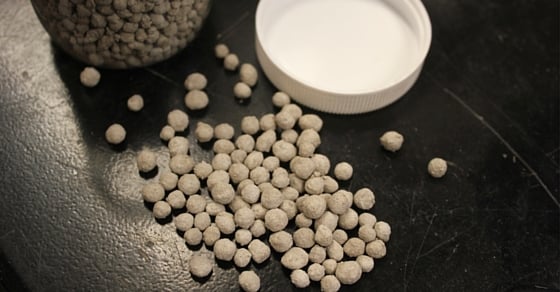Phosphate is mined for its life-giving capabilities to plants, animals, and humans in the form of phosphorus. A key component in crop production, livestock feed, and even in consumer products, in 2019 alone, world phosphate rock production was at 240 MT.
Just as with any mineral, phosphates can present challenges during processing. However, careful planning and preparation of both the process and equipment can help to achieve desired results, while also prolonging equipment life at the same time.
Phosphate Processing Challenges
Abrasive
Depending on the form they’re in and what they’re being processed into, phosphates can be anywhere from mildly to extremely abrasive. Whether produced to be a fertilizer such as MAP, DAP, or NPK, or an animal feed such as MCP or DCP, abrasiveness can pose problems to unprotected equipment, and therefore, equipment will need to be designed with this in mind.
Dust Issues
Phosphate products can also be dusty, depending on what form they’re in. Dust issues are especially problematic at phosphate beneficiation plants, where mined phosphate rock is dried after processing. The phosphate rock becomes dusty upon drying, and fines are commonly collected in a baghouse.
While these collected fines are dusty and difficult to handle, opportunity exists in agglomerating the fines so they are more easily handled and processed down the line. The agglomeration of fines significantly reduces issues associated with dust, and also allows the product to be more easily reintroduced to the process.
Corrosive
In processing phosphate products, many corrosive solutions are often added. The base of many phosphate products is phosphoric acid, which is a highly corrosive material. Specialty alloys and linings are often required on equipment to protect against corrosion.
Clumping
Clumping can also be an issue when processing phosphate products. Wet phosphates are prone to sticking and clumping, causing issues in processing equipment and impacting overall process efficiency.
While drying phosphates, sticking and clumping can occur on the belt conveyors and chutes going to the dryer, as well as on the walls and flights of the dryer. For this reason, phosphate rotary dryers are commonly fitted with knocking systems in order to reduce clumping during drying.
Variability
Phosphate deposits are incredibly diverse. Phosphate ore differs greatly from one deposit to the next, and even within the same deposit. This can be a challenge, because each deposit will likely require modifications to processing methods in order to produce a quality product.
Contamination
Similar to variation, phosphate rock is sometimes considered contaminated, meaning it is found in the presence of organics. This causes the phosphate rock to be low in value or even unusable as-is. In these cases, the phosphate rock will typically require purification via calcination in a rotary kiln, a process commonly referred to as the upgrading of phosphate ore.
Combating Phosphate Challenges
Feasibility and Pilot Testing
It is often both necessary and desirable to conduct testing, whether it be to troubleshoot and improve an existing process, collect data for a new process, or to take a concept from idea to product. Testing phosphates at batch and pilot scale helps to work out process variables and provide the information necessary for successful process scale-up and equipment design. These early testing stages allow for a familiarity with the unique sample to be gained, helping to minimize surprises later.
Testing is also especially critical when looking to purify contaminated phosphate ore. Because the makeup of phosphate ore deposits vary considerably, the times and temperatures required to remove organic components will also vary. Testing in a batch rotary kiln is frequently used to develop the time and temperature profiles necessary to remove the organic components and produce desired results.
High Quality Equipment
When it comes to processing phosphates, high quality equipment is essential. Equipment will need to be robust and designed around the characteristics of the sample at hand, as well as any additives that may be included in the process. Choosing an equipment manufacturer that is familiar with the potential challenges that phosphate products can present will go a long way in prolonging equipment life and ensuring process efficiency.
Critical wear points such as paddles and plows on agglomeration equipment will likely require modifications to protect against abrasion and corrosion. This might include constructing high wear areas with abrasion-resistant materials, or reinforcing them with specialty linings.
Conclusion
While phosphate processing can present challenges, many of the issues associated with phosphates are alleviated through planning and preparation, particularly in terms of equipment design and material testing.
FEECO has been working with phosphates since 1951. We offer a variety of services to the phosphates industry, including material testing, process and product development, custom equipment manufacturing, and even field services. Whether you’re working with phosphate rock, animal feed, or phosphatic fertilizers, FEECO can help. For more information on our phosphate capabilities, contact us today.

